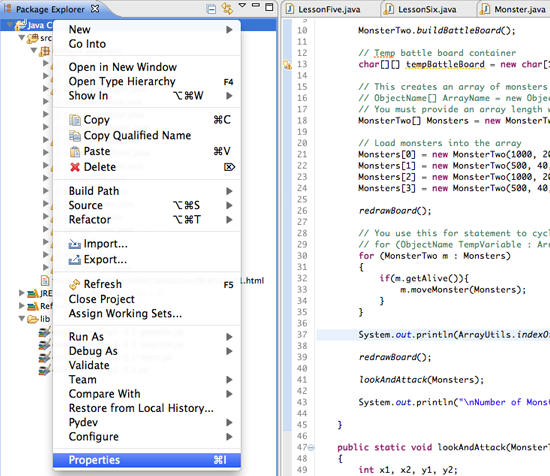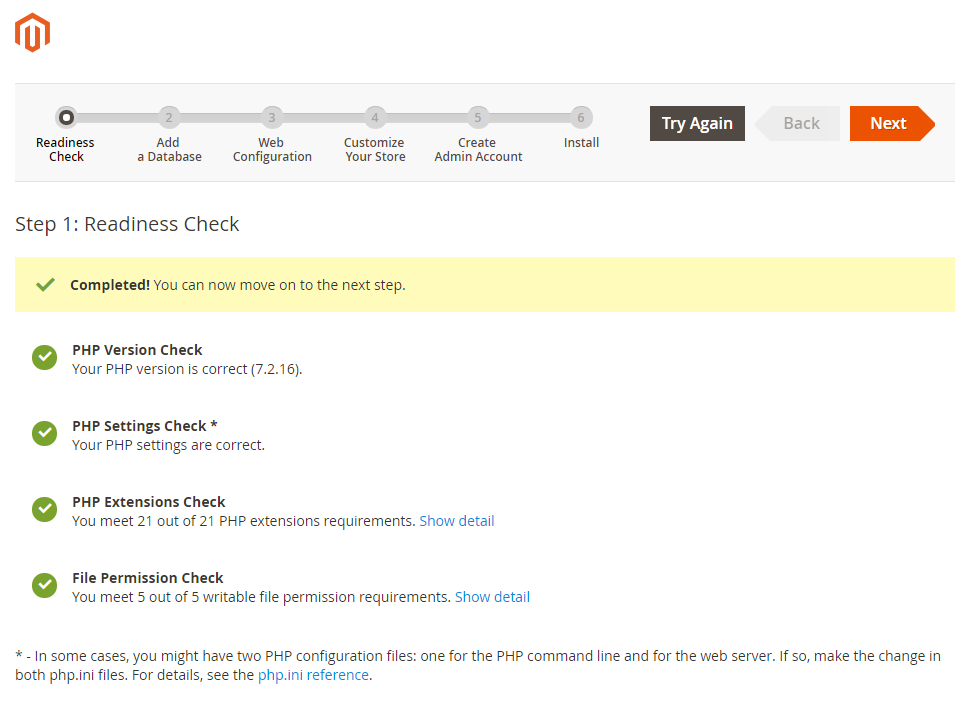- Java
- How To Install Java To Library Mac Download
- How To Install Java To Library Mac Torrent
- How To Install Pip3
- How To Install Java To Library Mac Torrent
- Java Jdk 10
- How To Install Windows
Jan 12, 2020 You can access the hidden Library folder without using Terminal, which has the side effect of revealing every hidden file on your Mac. This method will only make the Library folder visible, and only for as long as you keep the Finder window for the Library folder open. 2020-3-7 To test that Java is installed and working properly on your computer, run this test applet. Install Java on Mac. Download the jre-8u65-macosx-x64.pkg file. Review and agree to the terms of the license agreement before downloading the file. Double-click the.pkg file to launch it; Double-click on the package icon to launch install Wizard. To test that Java is installed and working properly on your computer, run this test applet. Install Java on Mac. Download the jre-8u65-macosx-x64.pkg file. Review and agree to the terms of the license agreement before downloading the file. Double-click the.pkg file to launch it; Double-click on the package icon to launch install Wizard. 2020-4-2 We will show you two ways to install Java JDK on Mac, via the popular Homebrew package manager and manually installation. 1.1 Install Homebrew and update it. $ brew update 1.2 Add adoptopenjdk/openjdk. $ brew tap adoptopenjdk/openjdk. 2015-8-24 终端直接执行 easyinstall 是会从系统的环境变量Path中寻找可执行文件,依据你的执行情况来看 1、command not found 是由于你直接执行命令easyinstall且未配置对应变量系统找不到命令导致.
-->
Azul Zulu Enterprise 内部版 OpenJDK 是适用于 Azure 和 Azure Stack 的 OpenJDK 的免费、多平台、生产就绪型发行版,由 Microsoft 及 Azul Systems 提供支持。Azul Zulu Enterprise builds of OpenJDK are a no-cost, multi-platform, production-ready distribution of the OpenJDK for Azure and Azure Stack backed by Microsoft and Azul Systems.这些版本包含构建和运行 Java SE 应用程序所需的所有组件。They contain all the components for building and running Java SE applications.
有多个支持用于每个客户端 OS 的下载包类型。There are multiple download package types supported for each client OS.也可从以下平台的 Azure 市场库获取虚拟机映像:You can also get a virtual machine image from the Azure Marketplace Gallery for the following platforms:
备注
这些说明针对 64 位 Java 8 版 JDK。These instructions target the 64-bit Java 8 version of the JDK.Azul 还提供 Java Run-time Environment (JRE) 作为独立安装。Azul also provides the Java Run-time Environment (JRE) as a stand-alone installation.此 JRE 随附在 JDK 安装中。The JRE is included with the JDK install.
Java 11 包也在 Azul 的 Azure 下载页上提供。Java 11 packages are also provided on Azul's Azure downloads page.
下载并安装 Windows 版 Azul Zulu JDKDownload and install the Azul Zulu JDKs for Windows
将 64 位 Azul Zulu JDK 8 作为 MSI 下载到客户端的某个位置,例如
C:Users<your_login>Downloads。Download the 64-bit Azul Zulu JDK 8 as an MSI to a location on your client, such asC:Users<your_login>Downloads.(.ZIP 包也在 Azul 的 Azure 下载页上提供。)(.ZIP packages are also provided on Azul's Azure downloads page.)导航到该目录,双击下载的 MSI 文件即可开始安装。Navigate to the directory and double-click the downloaded MSI file to begin installation.
下载并安装 Mac 版 Azul Zulu JDKDownload and install the Azul Zulu JDKs for Mac
这些步骤将 ZIP 文件下载到 Mac。These steps download a ZIP file to your Mac.此外还提供 DMG 版本。There is also a DMG version available.
将 64 位 Azul Zulu JDK 8 作为 ZIP 文件下载到客户端的某个位置,例如
/Library/Java/JavaVirtualMachines/。Download the 64-bit Azul Zulu JDK 8 as a ZIP file to a location on your client, such as/Library/Java/JavaVirtualMachines/.(.DMG 包也在 Azul 的 Azure 下载页上提供。)(.DMG packages are also provided on Azul's Azure downloads page.)启动 Finder,导航到下载目录,然后双击 ZIP 文件。Launch Finder, navigate to the download directory, and double-click the ZIP file.也可启动终端命令窗口,然后导航到目录并运行:Alternatively, you can launch a terminal command window, navigate to the directory, and run:
下载并安装 Alpine Linux 版 Azul Zulu JDKDownload and install the Azul Zulu JDKs for Alpine Linux
将 64 位 Azul Zulu JDK 8 作为 TAR 文件下载到客户端的某个位置,例如
/usr/lib/jvm。Download the 64-bit Azul Zulu JDK 8 as a TAR file to a location on your client, such as/usr/lib/jvm.(.RPM 和 .DEB 包也在 Azul 的 Azure 下载页上提供。)(.RPM and .DEB packages are also provided on Azul's Azure downloads page.)转到你的目录并运行以下命令,将文件解压缩并展开:Go to your directory and run the following command to unzip and expand the file:
确认安装Confirm your installation
若要确认安装,请转到命令行并运行 java -version。To confirm your installation, go to the command-line and run java -version.
此命令的输出应该是:The output of the command should be:
下载并安装 Yum 存储库中的 Azul Zulu JDKDownload and install the Azul Zulu JDKs from a Yum repository
Azul Zulu JDK 在 Yum 存储库中由 Azul 提供。The Azul Zulu JDKs are provided in a Yum repository by Azul.
若要安装适用于 Java 8 的 Azul Zulu JDK,请在 CLI 中运行以下命令:To install the Azul Zulu JDK for Java 8, run the following commands from your CLI:
对于 Java 11,请运行:For Java 11, run:
对于 Java 12(预览版),请运行:For Java 12 (Preview), run:
若要更新 Yum 存储库中的 Zulu JDK 8 包,请运行以下命令:To update a Zulu JDK 8 package from a Yum repository:
(如果使用版本 11 或 12,请更改以上命令中的版本号。)(Change the version number in the command above if you are using versions 11 or 12.)
若要删除 Yum 存储库中的 Zulu JDK 8 包,请运行以下命令:To remove a Zulu JDK 8 package from a Yum repository:
(如果使用版本 11 或 12,请更改以上命令中的版本号。)(Change the version number in the command above if you are using versions 11 or 12.)
下载并安装 apt-get 存储库中的 Azul Zulu JDKDownload and install the Azul Zulu JDKs from an apt-get repository
Azul Zulu JDK 也在 apt-get 存储库中由 Azul 提供。The Azul Zulu JDKs are also provided in an apt-get repository by Azul.
若要通过 apt-get 安装适用于 Java 8 的 Azul Zulu JDK,请在 CLI 中运行以下命令:To install the Azul Zulu JDK for Java 8 with apt-get, run the following commands from your CLI:
对于 Java 11,请运行:For Java 11, run:
对于 Java 12(预览版),请运行:For Java 12 (Preview), run:
若要更新 apt-get 存储库中的 Zulu JDK 8 包,请运行以下命令:To update a Zulu JDK 8 package from an apt-get repository:
以前的版本会被自动删除。The previous release will be automatically removed.(如果使用版本 11 或 12,请更改以上命令中的版本号。)(Change the version number in the command above if you are using versions 11 or 12.)
若要删除 apt-get 存储库中的 Zulu JDK 8 包,请运行以下命令:To remove a Zulu JDK 8 package from an apt-get repository:
(如果使用版本 11 或 12,请更改以上命令中的版本号。)(Change the version number in the command above if you are using versions 11 or 12.)
若要更详细地了解如何准备、安装和管理用于 Azure 开发的 Azul Zulu JDK,请阅读官方 Zulu 文档。For more detailed guidance on preparing, installing, and managing your Azul Zulu JDKs for Azure development, read the official Zulu docs.
This topic includes the following sections:
System Requirements for Installing the JDK on macOS
The following are the system requirements for installing the JDK on macOS:
Any Intel-based computer running macOS.
Administrator privileges.
You cannot install Java for a single user. Installing the JDK on macOS is performed on a systemwide basis for all users. Administrator privileges are required to install the JDK on macOS.
Determining the Default JDK Version on macOS
When starting a Java application through the command line, the system uses the default JDK.
You can determine which version of the JDK is the default by entering java -version in a Terminal window. If the installed version is 12 Interim 0, Update 0, and Patch 0, then you see a string that includes the text 12. For example:
To run a different version of Java, either specify the full path, or use the java_home tool. For example:
$ /usr/libexec/java_home -v 12 --exec javac -version
Installing the JDK on macOS
- Download the JDK
.dmgfile,jdk-12.interim.update.patch-macosx-x64.dmg.Before the file can be downloaded, you must accept the license agreement.
- From either the browser Downloads window or from the file browser, double-click the
.dmgfile to start it.A Finder window appears that contains an icon of an open box and the name of the.pkgfile. - Double-click the
JDK 12.pkgicon to start the installation application.The installation application displays the Introduction window. - Click Continue.
- Click Install. A window appears that displays the message: Installer is trying to install new software. Enter your password to allow this.
- Enter the Administrator user name and password and click Install Software.The software is installed and a confirmation window is displayed.
.dmg file if you want to save disk space. Java
Uninstalling the JDK on macOS
You must have Administrator privileges.Note:
Do not attempt to uninstall Java by removing the Java tools from /usr/bin. This directory is part of the system software and any changes will be reset by Apple the next time that you perform an update of the OS.
How To Install Java To Library Mac Download
- Go to
/Library/Java/JavaVirtualMachines. - Remove the directory whose name matches the following format by executing the
rmcommand as a root user or by using thesudotool:/Library/Java/JavaVirtualMachines/jdk-interim.update.patch.jdkFor example, to uninstall 12 Interim 0 Update 0 Patch 0:
$ rm -rf jdk-12.jdk
Installation FAQ on macOS Platform

This topic provides answers for the following frequently asked questions about installing JDK on macOS computers.
1. How do I find out which version of Java is the system default?
When you run a Java application from the command line, it uses the default JDK. If you do not develop Java applications, then you do not need to worry about this. See Determining the Default JDK Version on macOS.
How To Install Java To Library Mac Torrent
2. How do I uninstall Java?
See Uninstalling the JDK on macOS.
How To Install Pip3
3. After installing Java for macOS 2012-006, can I continue to use Apple's Java 6 alongside the macOS JDK for Java 12?
If you want to continue to develop with Java 6 using command-line, then you can modify the startup script for your favorite command environment. For bash, use this:
$ export JAVA_HOME=`/usr/libexec/java_home -v 12`
How To Install Java To Library Mac Torrent
Some applications use /usr/bin/java to call Java. After installing Java for macOS 2012-006, /usr/bin/java will find the newest JDK installed, and will use that for all of the Java-related command-line tools in /usr/bin. You may need to modify those applications to find Java 6, or contact the developer for a newer version of the application.
4. Can I restore Apple Java after uninstalling Oracle Java?
Go back to Apple Java using the following instructions:
Java Jdk 10
Uninstall Oracle Java by deleting the plug-in file. From a command-line, enter:
$ sudo rm -rf '/Library/Internet Plug-Ins/JavaAppletPlugin.plugin'Create a symlink using the following command, entered on a single line:
$ sudo ln -s /System/Library/Java/Support/CoreDeploy.bundle/Contents/JavaAppletPlugin.plugin '/Library/Internet Plug-Ins/JavaAppletPlugin.plugin'
How To Install Windows
5. What happened to the Java Preferences app in Application Utilities?
The Java Preferences app was part of the Apple Java installation and is not used by Oracle Java. Therefore, macOS releases from Apple that do not include Apple Java will not include Java Preferences.
